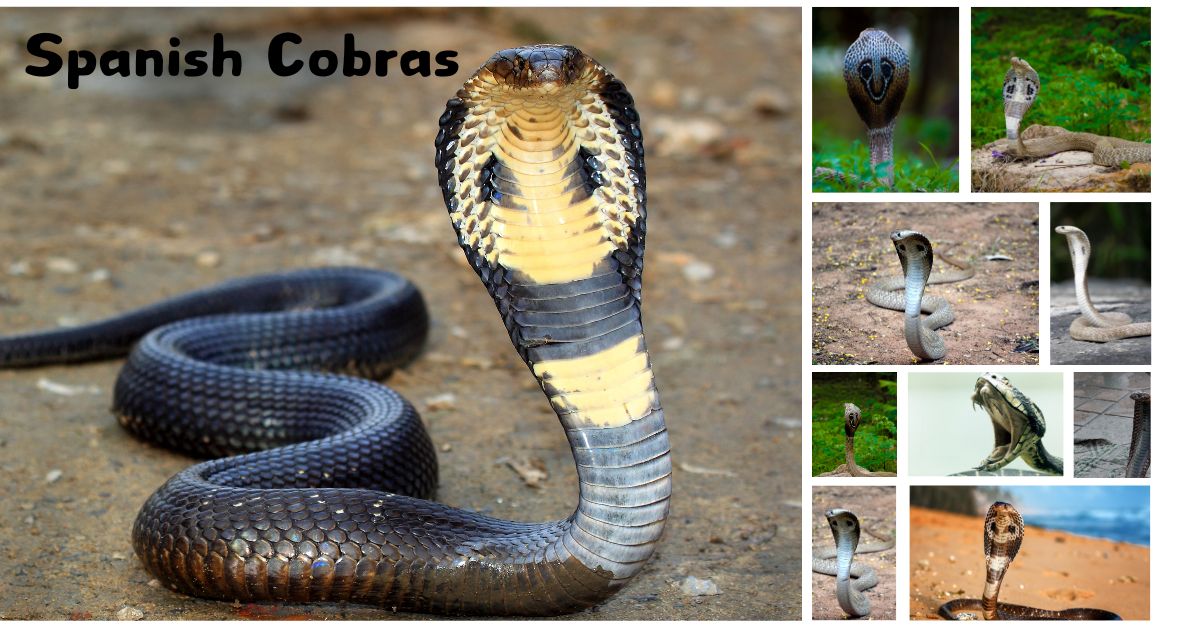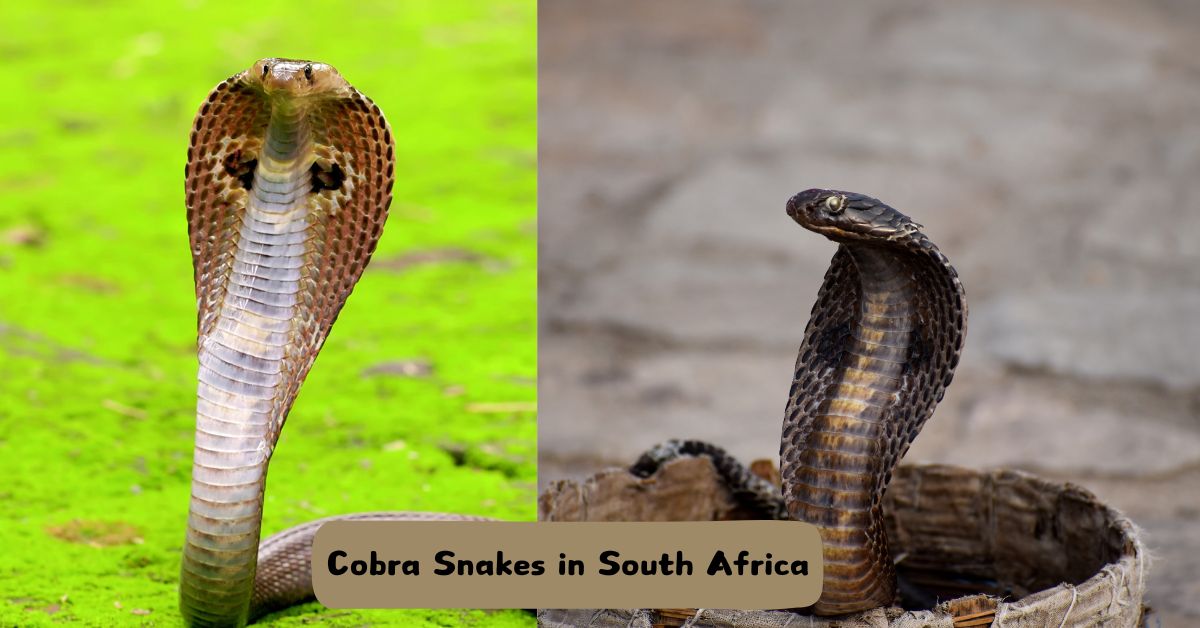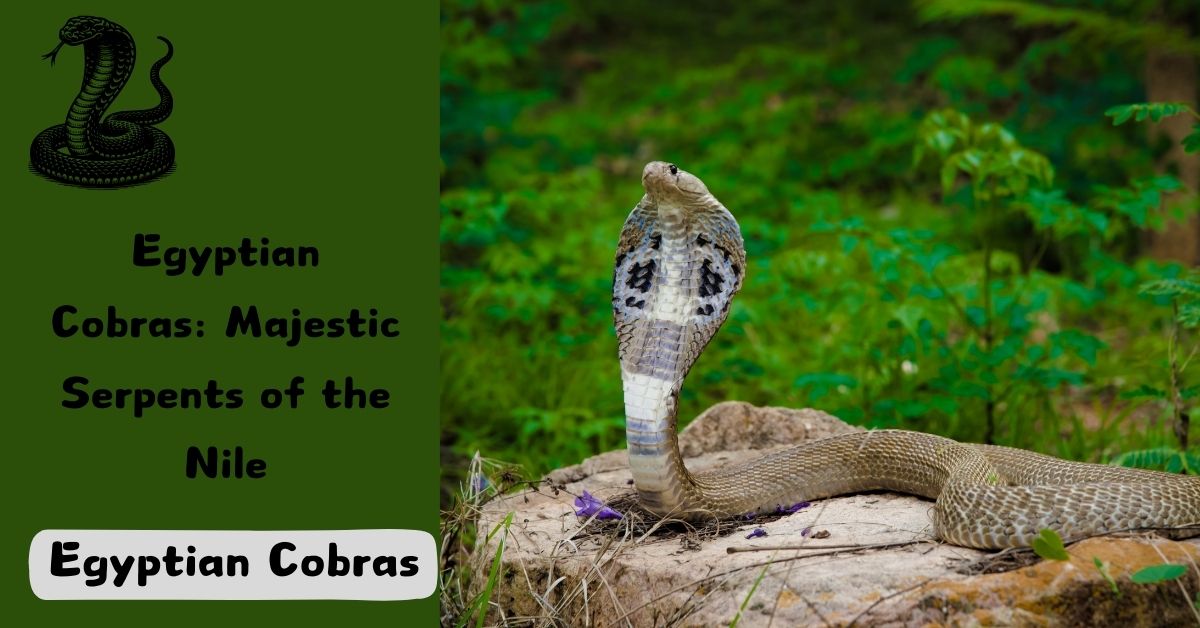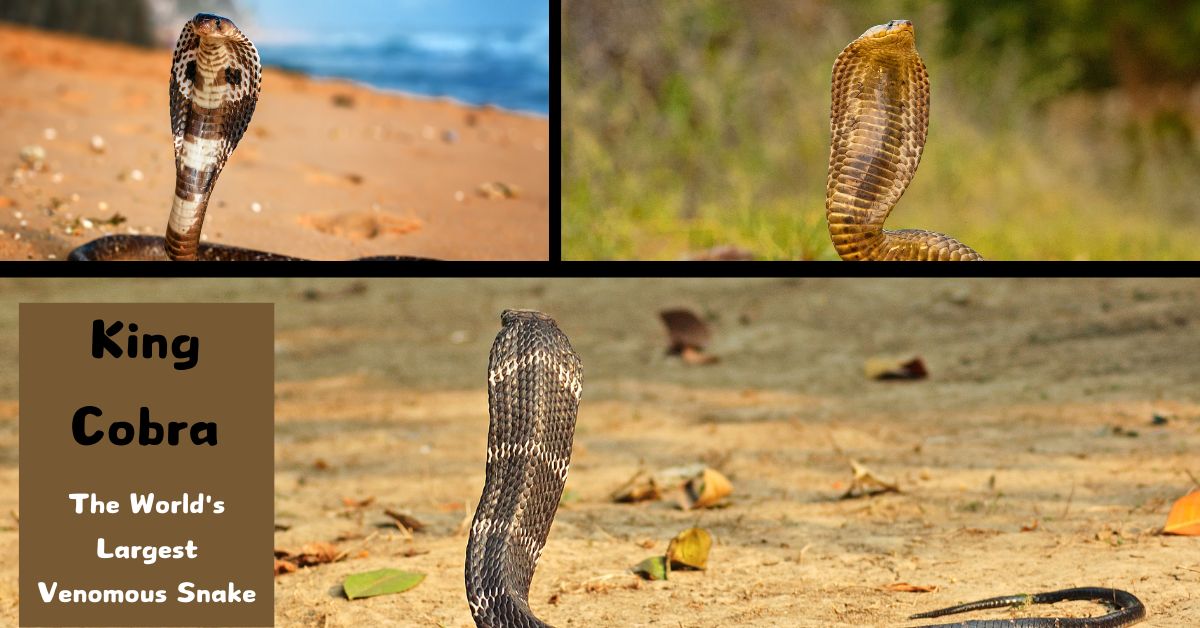
King Cobra: The World’s Largest Venomous Snake
Introduction
There are a part of snakes in this world but they all have one ruler called Lord Cobra. This wind is known for its long body, quality and thick body. Its logical title is Ophiophagus hannah. Seeing the control of the cobra, it is called the lord of snakes, but it can too be said that the wind is the ruler in its possess way, since each wind has its claim interesting character. So who is the lord of snakes, the reply to this address can be distinctive from the other snakes. In today’s article we will tell you approximately the lord cobra wind, giving a comprehensive outline of this surprising reptile.
What is a King Cobra?
The Lord Cobra (Ophiophagus hannah) is prestigious for its great size and powerful toxin. Local to South and Southeast Asia, this snake isn’t unquestionably the biggest venomous snake yet in addition one of the most dreaded. The Ruler Cobra can arrive at lengths of up to 18 feet (5.5 meters), making it an imposing presence right at home.
Physical Characteristics
The Ruler Cobra is recognized by its striking appearance. It includes a long, thin body shrouded in smooth, polished scales. Its shading differs from olive green to dark, frequently with lighter groups or spots. One of the most conspicuous elements of the Lord Cobrais its hood, which it extends when compromised. This hood is shaped by extended ribs and is a urgent piece of its guarded stance.
Venom and Its Effects
The toxin of the Ruler Cobra is exceptionally neurotoxic, meaning it influences the sensory system. A solitary nibble can convey a gigantic portion of toxin, which can prompt respiratory disappointment and demise on the off chance that not treated immediately. Be that as it may, Lord Cobras are by and large not forceful and will stay away from human contact whenever the situation allows. They utilize their toxin essentially to stifle prey, which incorporates different snakes, reptiles, and, surprisingly, little warm blooded animals.
Habitat and Distribution
The Lord Cobraoccupies different conditions across its reach. It is normally tracked down in thick woodlands, prairies, and close to water sources. This snake is local to nations like India, Thailand, Malaysia, and the Philippines.
Adaptations for Survival
Lord Cobras are profoundly versatile and can flourish in various conditions. Their great climbing abilities permit them to explore trees and other vegetation, which is fundamental for hunting and sidestepping hunters. They are likewise capable swimmers and can frequently be found close to water bodies.
Conservation Status
While the Ruler Cobra isn’t at present recorded as imperiled, it faces dangers from natural surroundings annihilation and human exercises. Deforestation and urbanization diminish its normal environment, and the unlawful untamed life exchange likewise represents a gamble. Preservation endeavors are pivotal to guarantee the endurance of this wonderful species.
Behavior and Diet
Ruler Cobras are known for their lone and regional nature. They are basically diurnal, meaning they are generally dynamic during the day. Their eating routine predominantly comprises of different snakes, including venomous species. Lord Cobras are gifted trackers and utilize their sharp feeling of smell to find prey.
Reproduction and Lifespan
The Lord Cobra’s mating season normally happens from January to April. During this time, guys take part in battle to lay out predominance and win the option to mate with a female. In the wake of mating, the female lays a grasp of 20 to 40 eggs in a home made of leaves and flotsam and jetsam. She monitors the home until the eggs hatch, which for the most part takes around 2 to 90 days. The youthful Ruler Cobras are free from birth and should battle for themselves.
In the wild, Lord Cobras can satisfy 20 years, in spite of the fact that their life expectancy in imprisonment might be somewhat longer because of the controlled climate and absence of hunters.
King Cobra Safety and Interaction
Experiencing a Ruler Cobra in the wild can be an overwhelming encounter. In any case, it is critical to comprehend that these snakes by and large really like to stay away from people and will possibly strike whenever incited. Here are a few ways to remain safe:
- Abstain from Inciting: Don’t endeavor to deal with or incite a Lord Cobra. Maintain a protected separation and regard their space.
- Be Mindful in Their Territory: On the off chance that you are in a space known for Lord Cobra sightings, be cautious and watch where you step.
- Look for Clinical Consideration: Whenever chomped, look for sure fire clinical assistance. The Ruler Cobra’s toxin is exceptionally harmful, and brief treatment is fundamental.
Threats to survival
Lord cobras, the world’s longest venomous snakes, face various dangers that endanger their endurance. Here are a portion of the essential difficulties:
- Territory Misfortune: Deforestation and land change for farming or metropolitan improvement are significant dangers. As their regular territories are annihilated, lord cobras lose essential living and hunting spaces.
- Human Infringement: Extension of human settlements and framework can prompt expanded experiences between ruler cobras and individuals, frequently bringing about the snakes being killed out of dread or in reprisal.
- Environmental Change: Changes in environment can influence the accessibility of prey and modify the snake’s territory. For example, changes in temperature and precipitation examples can affect the biological systems that help their prey.
- Unlawful Natural life Exchange: Lord cobras are once in a while caught for the outlandish pet exchange or for their skin, which can prompt a decrease in wild populaces.
- Contamination: Ecological poisons can influence the strength of ruler cobras and their prey. Toxins in water and soil can upset their conceptive achievement and in general wellbeing.
- Loss of Prey: The decrease in populaces of prey species, because of environment annihilation or overhunting, can straightforwardly affect ruler cobras as they depend on these creatures for food.
- Human-Snake Struggle: In regions where human populaces are developing, there are more successive experiences between ruler cobras and people, prompting clashes that frequently bring about the snake being killed.
Preservation endeavors zeroed in on living space assurance, diminishing human-snake clashes, and addressing unlawful untamed life exchange are vital to guaranteeing the endurance of ruler cobras.
Predators and prey
The ruler cobra (*Ophiophagus hannah*) is an entrancing and imposing snake with an exceptional situation in the environment. Here is a gander at its collaborations with hunters and prey:
Prey
- Different Snakes: The ruler cobra fundamentally benefits from different snakes, including venomous species like pit snakes and, surprisingly, different cobras. Its logical name, *Ophiophagus*, means “snake-eater,” featuring its dietary inclination.
- Little Well evolved creatures: Periodically, it could consume little vertebrates or reptiles, however these make up a more modest piece of its eating regimen contrasted with different snakes.
Hunters
Grown-up ruler cobras have not very many regular hunters because of their size and powerful toxin. Nonetheless, a few potential dangers include:
- People: People are a critical danger because of living space obliteration, snakebite occurrences, and hunting. In certain districts, they are pursued for their skin or out of dread.
- Huge Flying predators: now and again, enormous flying predators could assault and consume adolescent ruler cobras. These birds, like falcons and falcons, are equipped for overwhelming more modest snakes.
- Other Enormous Hunters: In uncommon occasions, other huge hunters like crocodiles could represent a danger to ruler cobras, particularly when the snakes are close to water.
The lord cobra’s noteworthy size and toxin make it a predominant hunter in its current circumstance, yet it should stay careful of these couple of expected dangers.
Breeding
Reproducing ruler cobras is a complicated and moving interaction because of their size, toxin, and explicit territory needs. Assuming you’re genuinely considering it, there are a few basic perspectives to comprehend and get ready for:
- Legalities and Guidelines: Check nearby regulations and guidelines with respect to the reproducing and responsibility for snakes. Many spots have severe guidelines or boycotts.
- Walled in area: Ruler cobras require enormous, secure nooks with controlled temperature and mugginess. An extensive, very much ventilated terrarium is vital.
- Diet and Wellbeing: Guarantee both the male and female are in magnificent wellbeing prior to endeavoring reproducing. Ruler cobras are enormous snakes, and their eating routine ought to be suitably made due, frequently including the taking care of entire rodents or other prey things.
- Reproducing Conditions: Repeat their normal rearing circumstances as intently as could be expected. This frequently includes giving a time of cooling or a colder time of year “hibernation” period to impersonate occasional changes.
- Romance and Mating: Noticing romance way of behaving is vital. Lord cobras can be very forceful, so it’s essential to intently screen their connections. The male will frequently show an intricate romance custom.
- Egg Hatching: After effective mating, the female will lay eggs, which should be painstakingly brooded. Ruler cobra eggs require a warm, muggy climate to appropriately create. Brooding can require a while.
- Hatchling Care: Hatchlings are profoundly venomous and require specific consideration. They need a different nook with fitting temperature and mugginess, and they ought to be taken care of suitably measured prey.
- Ability and Assets: Because of the dangers implied with taking care of venomous snakes and the specific consideration they require, it’s essential to have huge experience and assets prior to endeavoring to raise lord cobras.
Reproducing ruler cobras isn’t for the cowardly and requires a profound comprehension of their science and conduct. Assuming that you’re new to keeping venomous snakes, it very well may be astute to begin with less testing species.
Size
The ruler cobra (*Ophiophagus hannah*) is the longest venomous snake on the planet. By and large, they can arrive at lengths of around 10 to 13 feet (3 to 4 meters), yet a few people have been recorded at lengths of up to 18 feet (5.5 meters). Their size, joined with their strong toxin and forceful way of behaving, makes them an imposing presence in their local environments across Southeast Asia.
Young and Family
The ruler cobra (Ophiophagus hannah) is a captivating animal groups, particularly with regards to relational peculiarities. The youthful ruler cobras are very not quite the same as their folks regarding conduct and appearance. Here is a short outline:
Appearance of Youthful Lord Cobras:
- Size: upon entering the world, lord cobra hatchlings are around 18 to 24 inches (45 to 60 cm) long. They are significantly more modest contrasted with the grown-ups, which can arrive at lengths of up to 18 feet (5.5 meters).
- Shading: They frequently have more striking examples and varieties contrasted with grown-ups. Their hue assists them with disguising right at home.
Parental Consideration:
- Female’s Job:Â Not normal for some snakes, female ruler cobras show some level of parental consideration. The female forms a home of leaves and twigs where she lays her eggs. Subsequent to laying, she monitors the home savagely against hunters.
- Hatching: The female broods the eggs by winding around them and keeping a steady temperature. This period can keep going for around 60 days.
- Subsequent to Incubating: When the eggs hatch, the youthful are moderately autonomous and can battle for themselves. The mother doesn’t give further consideration or sustenance. Nonetheless, she stays close to the home region to safeguard it while the eggs are as yet creating.
Conduct of Youthful Ruler Cobras:
- Freedom: Hatchlings are singular and autonomous from the second they are conceived. They should depend on their own senses to track down food and stay away from hunters.
- Diet: Youthful lord cobras principally feed on little reptiles and creatures of land and water, including reptiles and frogs, in contrast to grown-ups that attention on different snakes.
In general, while lord cobras are known for their furious and lone nature as grown-ups, the underlying phases of their life include huge parental speculation, particularly from the female.
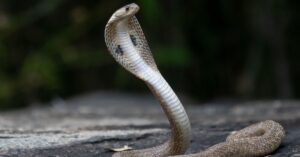
How poisonous is a king cobra?
The ruler cobra (*Ophiophagus hannah*) is viewed as one of the most risky snakes on the planet because of its powerful toxin. In any case, it’s not the most venomous snake as far as toxin harmfulness per unit volume — that title frequently goes to species like the inland taipan. All things considered, the ruler cobra’s risk comes from its mix of huge size, forceful nature, and the sheer volume of toxin it can convey in a solitary chomp.
Ruler cobra toxin is neurotoxic, meaning it influences the sensory system, and can cause loss of motion, respiratory disappointment, and even passing on the off chance that not treated instantly. The toxin contains various poisons that impede nerve signals, possibly prompting muscle loss of motion and respiratory disappointment.
A nibble from a ruler cobra is a serious health related crisis. Prompt clinical treatment, including counter-agent and strong consideration, is pivotal for endurance. Fortunately ruler cobras ordinarily just chomp with good reason and are frequently hesitant to strike except if incited.
What kills a king cobra?
Ruler cobras are imposing hunters, yet they really do confront dangers from various sources. The following are a couple of things that can kill a lord cobra:
- Regular Hunters: Despite the fact that ruler cobras are at the head of the natural order of things, they can be gone after by other huge creatures like enormous flying predators, especially assuming they are youthful or harmed.
- Rivalry: Other enormous snakes, like reticulated pythons, can at times be a danger, particularly when food assets are scant.
- Infection and Parasites: Like any wild creature, lord cobras can experience the ill effects of sicknesses and parasites that can debilitate or kill them.
- Human Action: Living space annihilation, poaching, and unintentional experiences with people are critical dangers. Lord cobras are some of the time killed out of dread or because of contentions with people.
- Other Ruler Cobras: In regional debates or mating contests, one lord cobra might kill another.
- Ecological Variables: Outrageous weather patterns or mishaps can likewise be deadly, particularly in the event that they bring about injury or openness to unforgiving circumstances.
Notwithstanding their venomous and strong nature, ruler cobras, similar to all untamed life, are powerless against a scope of biological and human-incited dangers.
Can we survive king cobra bite?
Getting through a lord cobra chomp is conceivable, yet it requires speedy and compelling clinical treatment. The lord cobra’s toxin is exceptionally poisonous and can cause extreme side effects, including loss of motion, respiratory disappointment, and even passing whenever left untreated. Here are central issues about endurance:
- Prompt Clinical Consideration: Look for crisis clinical consideration at the earliest opportunity. Antibody is the best treatment and should be directed rapidly to neutralize the impacts of the toxin.
- Emergency treatment Measures: While sitting tight for clinical assistance, attempt to keep the impacted appendage immobilized and at or underneath heart level to slow the spread of toxin. Try not to remove or sucking the toxin.
- Medical clinic Care: In a medical clinic, therapy could include counter-agent, relief from discomfort, steady consideration, and conceivably respiratory help on the off chance that the toxin has impacted relaxing.
Endurance chances improve with fast reaction and appropriate clinical consideration, so getting help quickly is urgent.
Why is king cobra called King?
The ruler cobra is classified “lord” since it is the longest venomous snake on the planet and possesses a predominant situation in its environment. Its size, power of toxin, and forceful nature add to its lofty title. Not at all like numerous different snakes, the lord cobra can grow up to 18 feet (5.5 meters) long and has a toxin that can kill a grown-up elephant or 20 people in a solitary nibble. Its amazing actual presence and deadly abilities procure it the “lord” assignment in the snake world.
How to treat a king cobra bite?
Treating a lord cobra nibble is a health related crisis that requires prompt consideration. The lord cobra’s toxin is profoundly poisonous and can cause extreme impacts, including respiratory disappointment and demise. You ought to do this:
- Call Crisis Administrations: Get proficient clinical assistance right away. Time is basic in treating venomous snake nibbles.
- Keep the Casualty Actually: Limit development to slow the spread of toxin through the circulation system. Immobilize the impacted appendage utilizing a support if conceivable.
- Keep the Nibble Region Beneath Heart Level: This can assist with easing back the spread of toxin.
Keep away from Specific Activities:
- Try not to endeavor to suck out the toxin.
- Try not to apply ice or a tourniquet.
- Try not to utilize a blade or any slicing instrument to make entry points.
- Keep the Casualty Quiet: Nervousness can demolish side effects. Console them and keep them as quiet yet as could really be expected.
- Screen Essential Signs: Monitor breathing, heartbeat, and cognizance while trusting that clinical experts will show up.
- Give Data: If conceivable, depict the snake to clinical work force. This can assist them with deciding the best course of treatment.
In a medical clinic setting, therapy regularly incorporates:
- Antidote: The essential treatment for lord cobra chomps. It can kill the toxin however should be directed by clinical experts.
- Strong Consideration: This might incorporate respiratory help, intravenous liquids, and drugs to oversee side effects.
Prompt and fitting clinical treatment is vital to work on the possibilities of recuperation from a lord cobra nibble.
Who is the big enemy of King Cobra?
The Ruler Cobra, known for its noteworthy size and powerful toxin, has a couple of eminent foes in nature. Its essential adversaries are other huge snakes, especially those that might possibly outsmart or overwhelm it. A few models include:
- Different Cobras: at times, bigger types of cobras can be contenders or opponents.
- Ruler Snakes: Lord snakes are known to go after different snakes, including Ruler Cobras. They are safe to many snake toxins, which gives them an edge in conflicts.
- Enormous Hunters: Flying predators, like birds and falcons, as well as huge vertebrates like mongooses, may go after youthful or less mindful Ruler Cobras.
Regarding direct dangers, nonetheless, the Lord Cobra’s fundamental concern is generally different snakes and hunters that could target it, instead of having a solitary conclusive “foe.”
FAQs About King Cobras
Q: How can you identify a King Cobra?
A: The Ruler Cobra can be recognized by its enormous size, hood, and particular hue. It commonly has a smooth, gleaming appearance with changing shades of green, brown, or dark.
Q: What does King Cobra venom do?
A: The toxin of the Lord Cobra is neurotoxic, influencing the sensory system. It can cause loss of motion, respiratory disappointment, and demise in the event that not treated immediately.
Q: Where can you find King Cobras?
A: Ruler Cobras are local to South and Southeast Asia, including nations like India, Thailand, Malaysia, and the Philippines.
Q: Are King Cobras dangerous to humans?
A: Indeed, Lord Cobras can be hazardous because of their intense toxin. In any case, they are by and large not forceful and will stay away from human contact whenever the situation allows.
Q: How long do King Cobras live?
A: In the wild, Ruler Cobras can satisfy 20 years. In bondage, they might live somewhat longer because of a controlled climate.
Q: What do King Cobras eat?
A: Lord Cobras basically feed on different snakes, including venomous species, as well as reptiles and little vertebrates.
Q: How does the King Cobra reproduce?
A: The Ruler Cobra’s mating season happens from January to April. Subsequent to mating, the female lays a grip of eggs and watches them until they hatch.
Q: What threats do King Cobras face?
A: Lord Cobras face dangers from natural surroundings obliteration, urbanization, and the unlawful untamed life exchange. Preservation endeavors are fundamental to safeguard their populaces.
Conclusion
The Lord Cobra is a remarkable animal that holds a noticeable spot in the collective of animals. Its noteworthy size, strong toxin, and unmistakable ways of behaving make it a subject of interest and regard. By seeing more about the Lord Cobra, we can see the value in its part in the biological system and the significance of preservation endeavors to safeguard this sublime snake for people in the future. Whether you are an untamed life lover or just interested about the normal world, the Lord Cobra is a demonstration of the extraordinary variety and intricacy of life on The planet.

